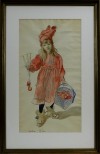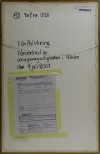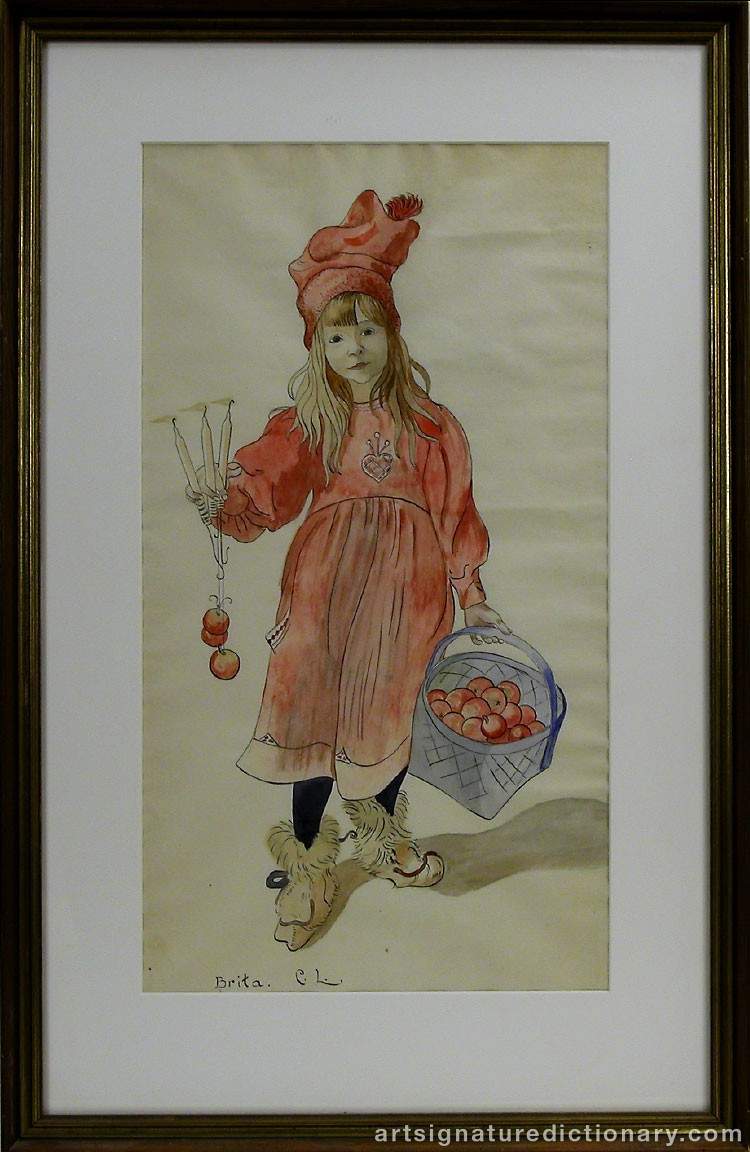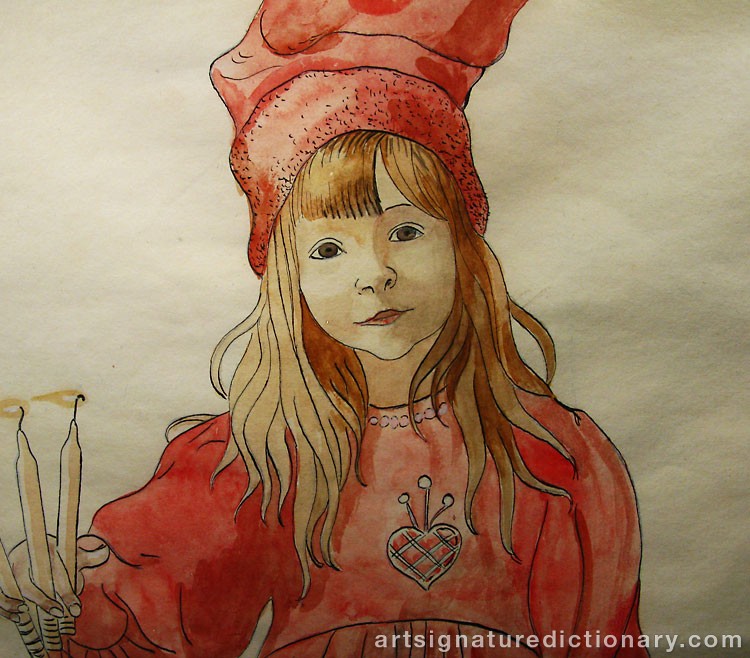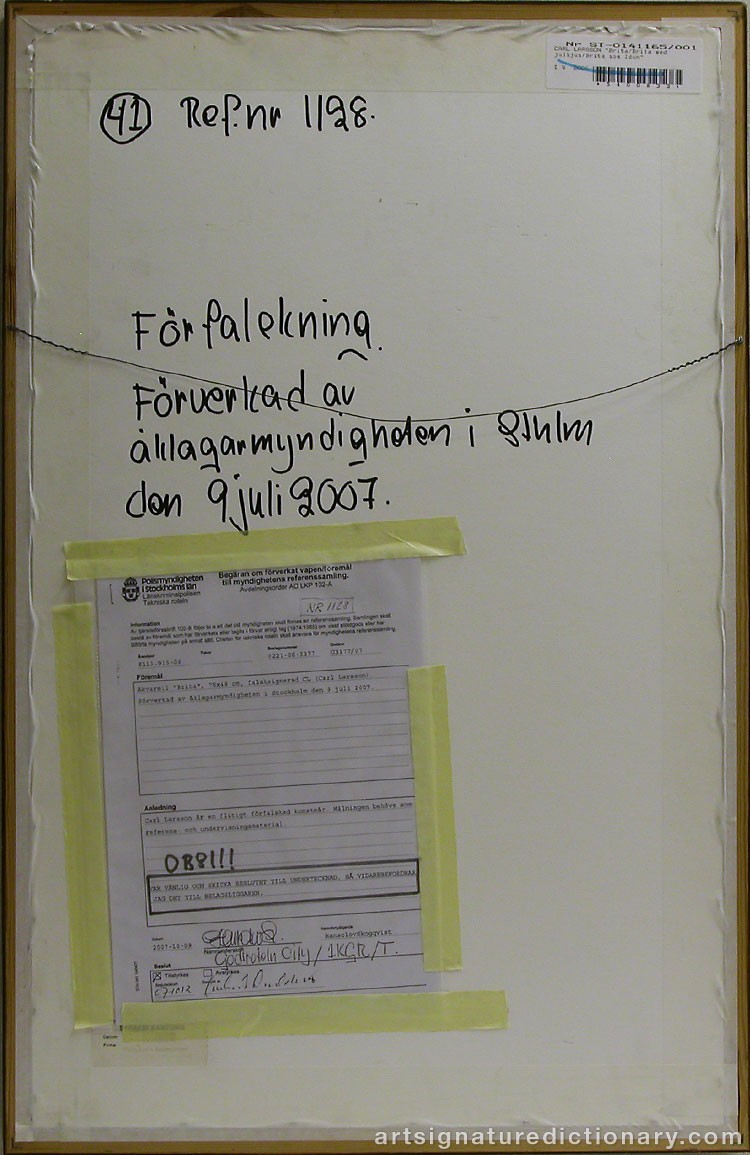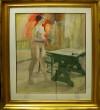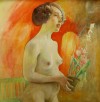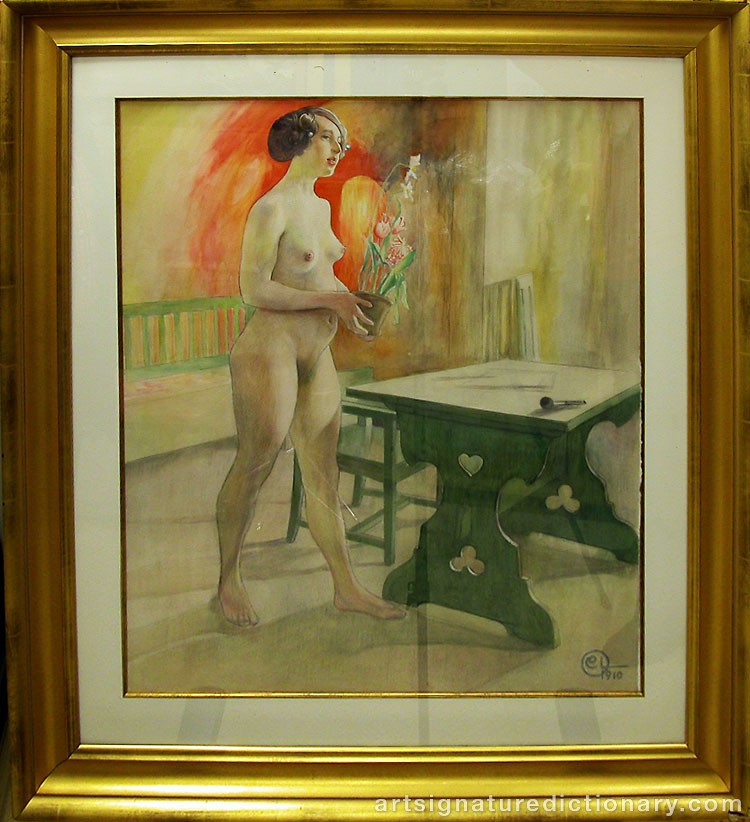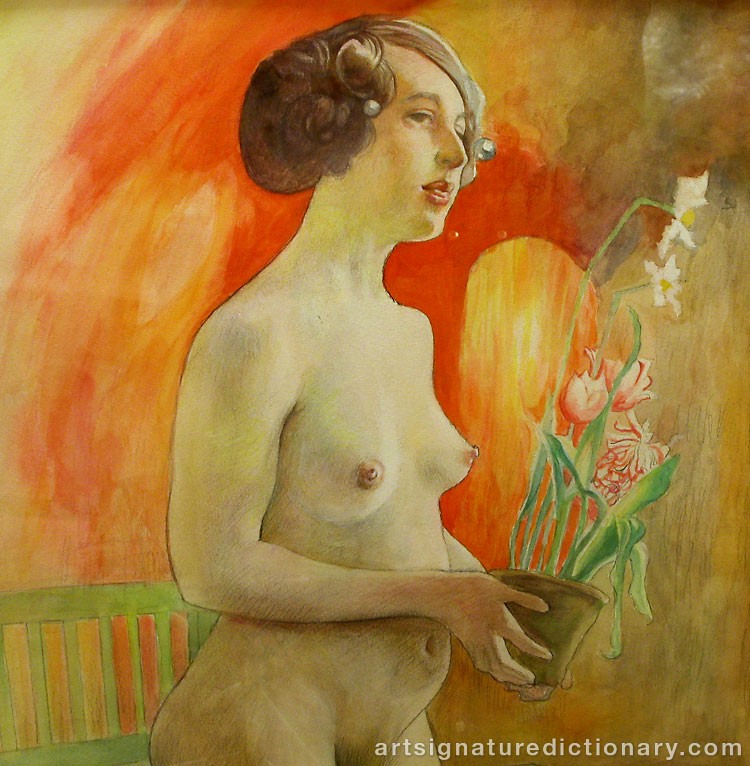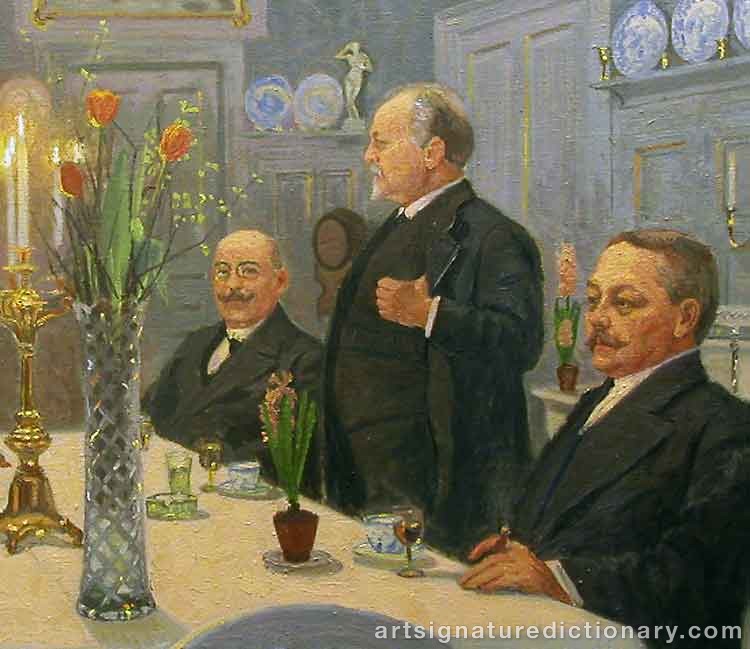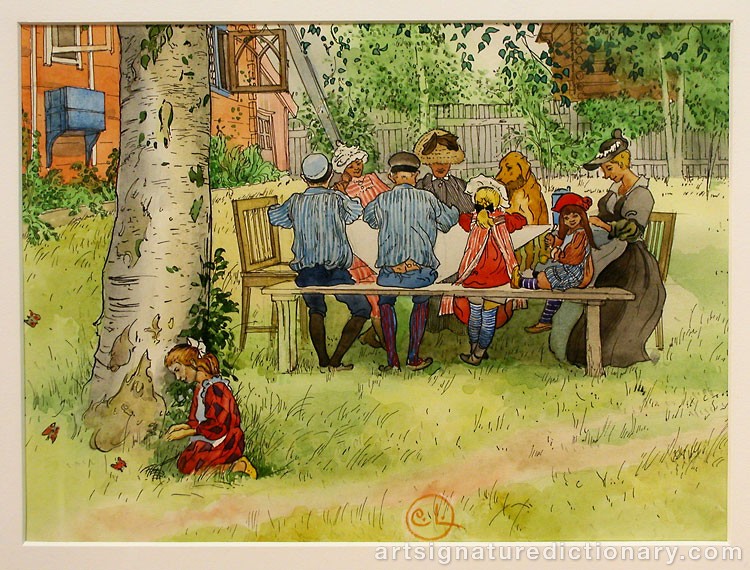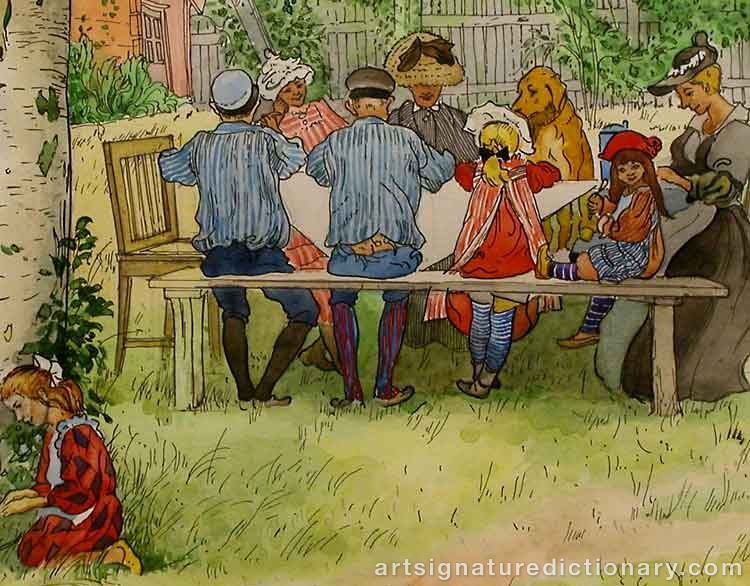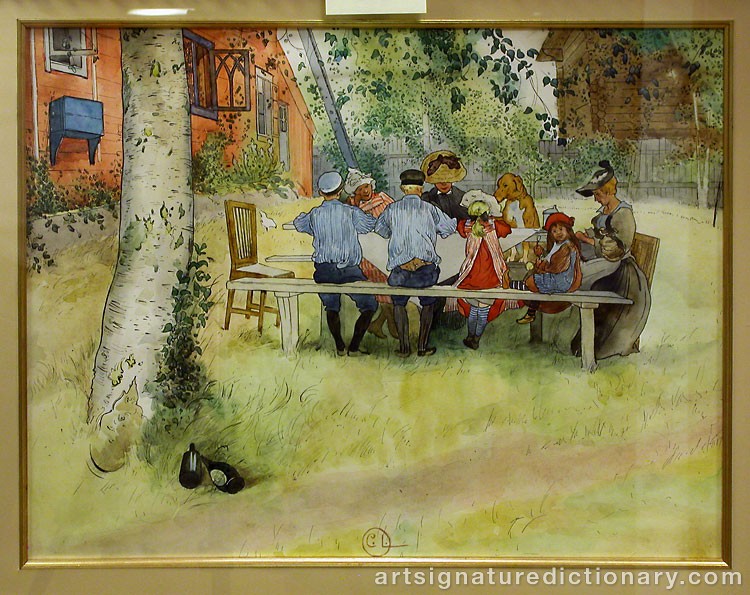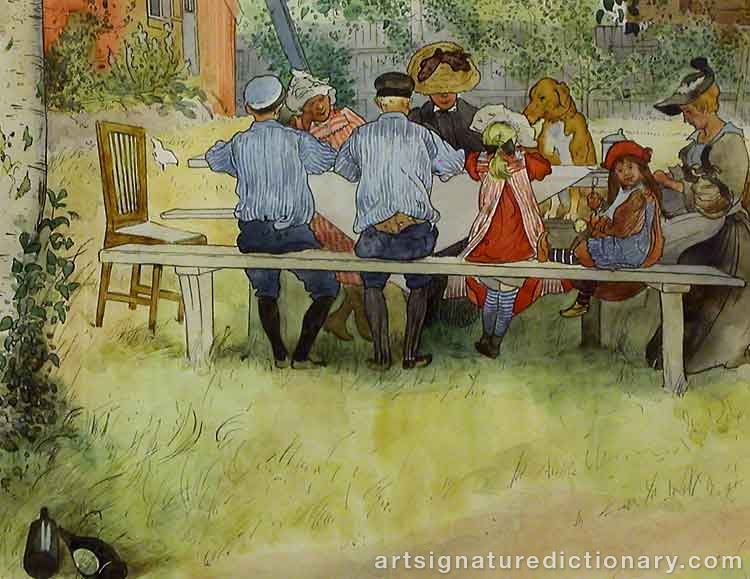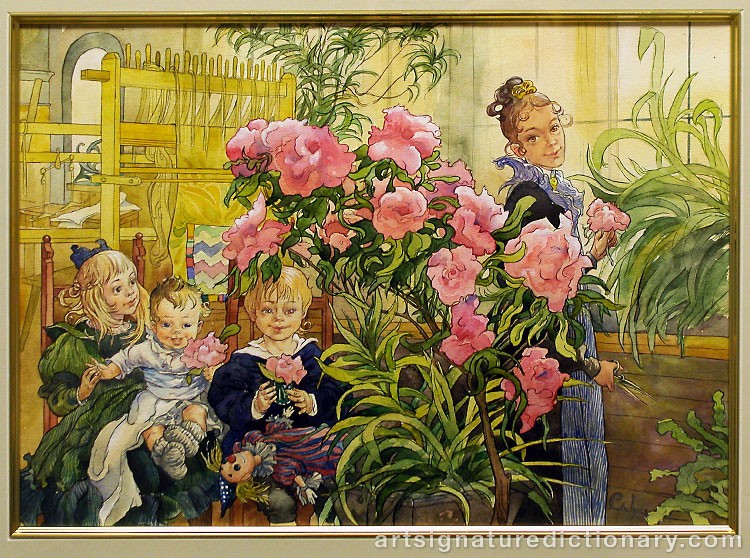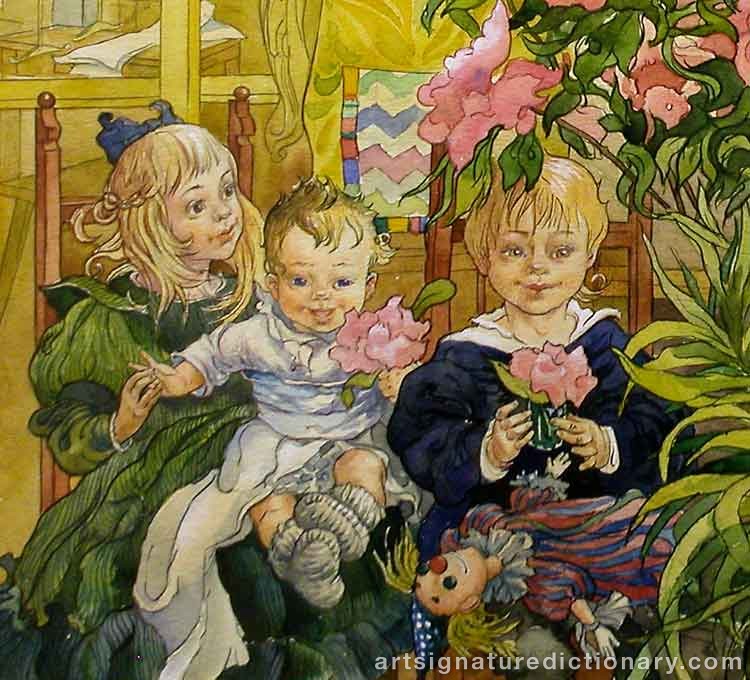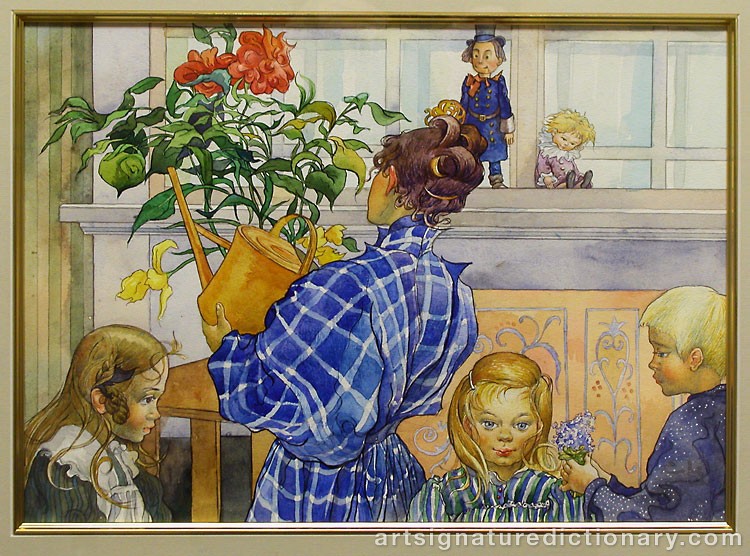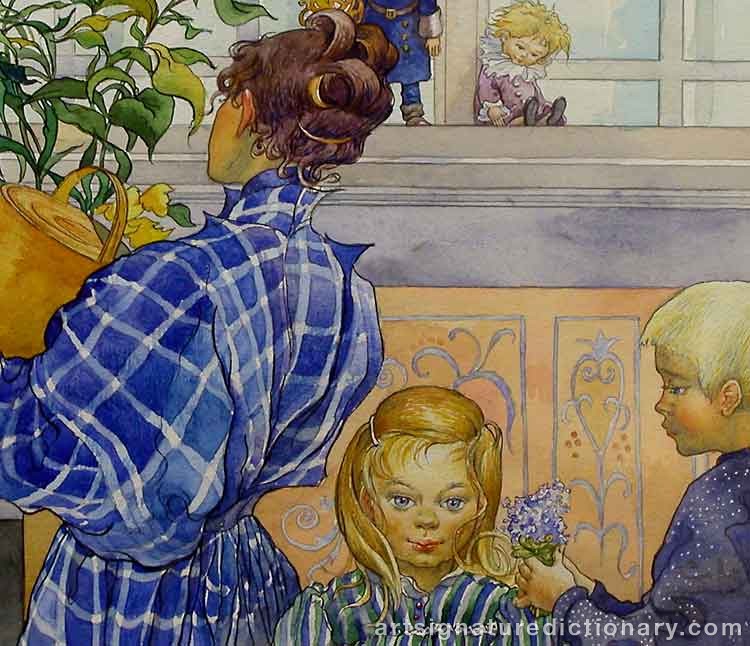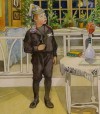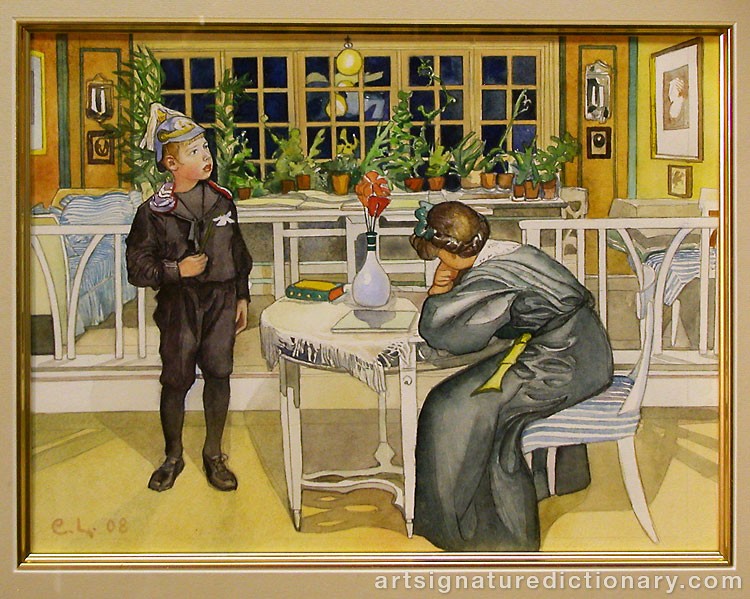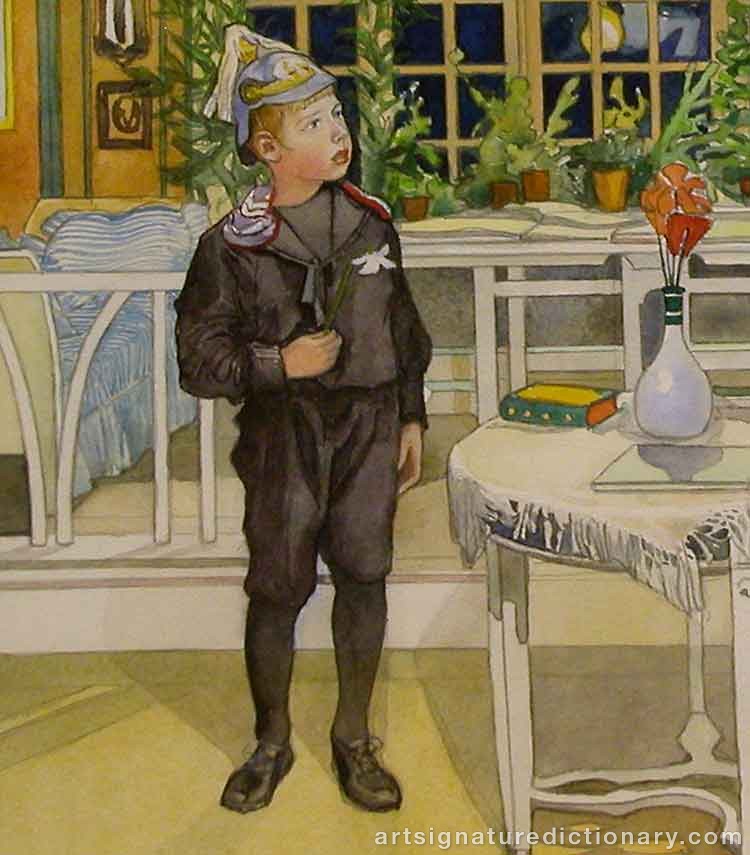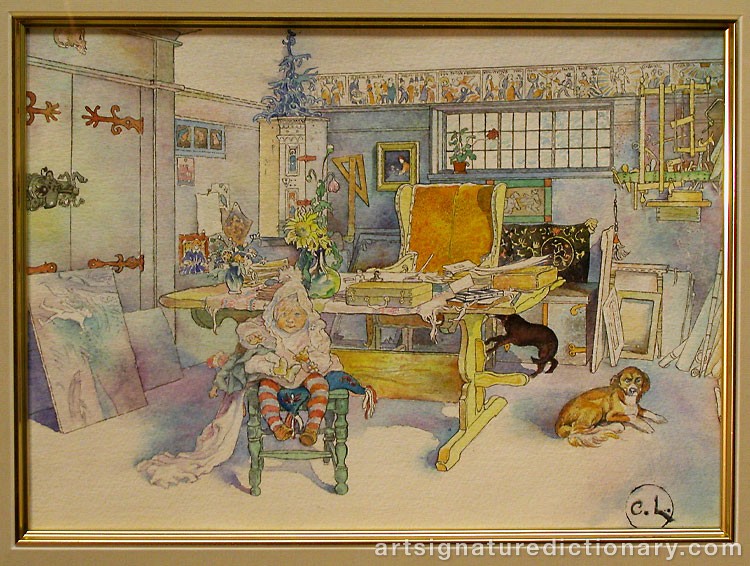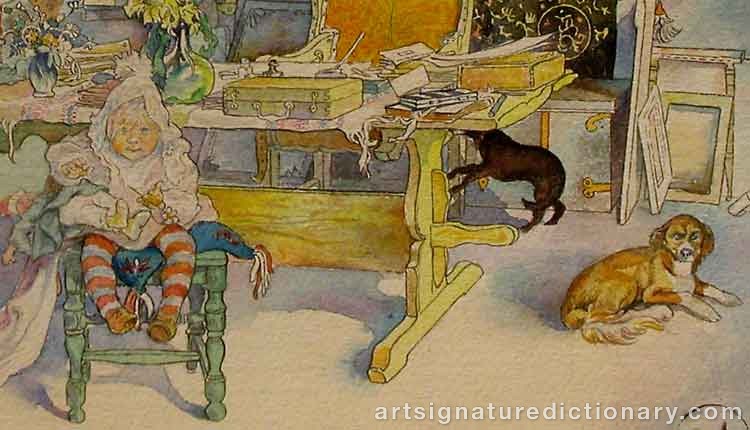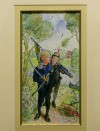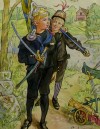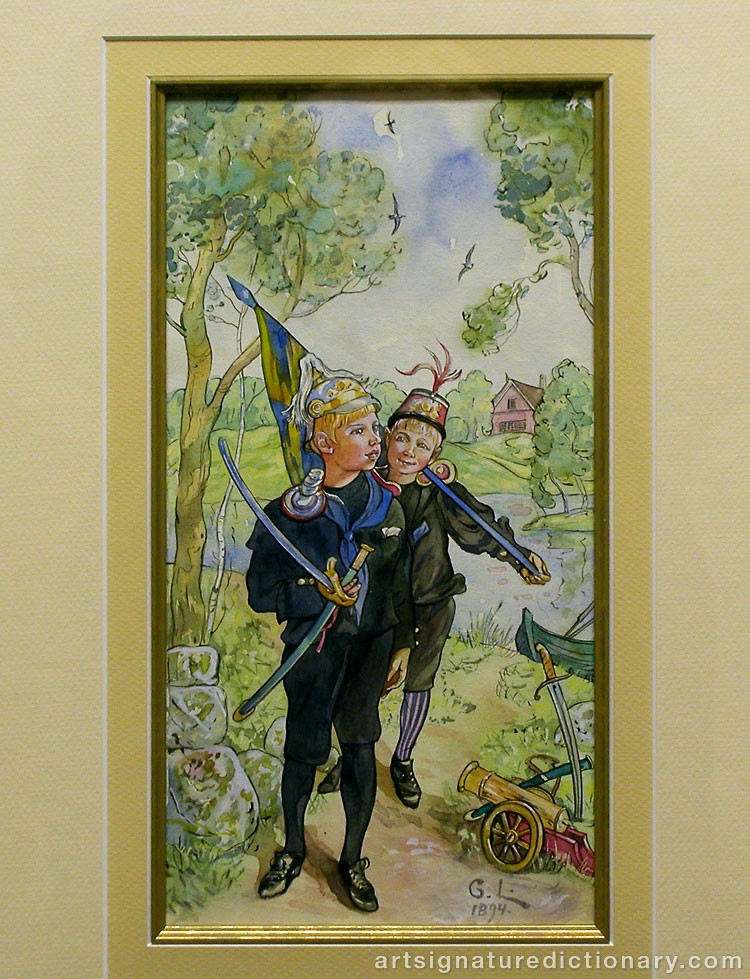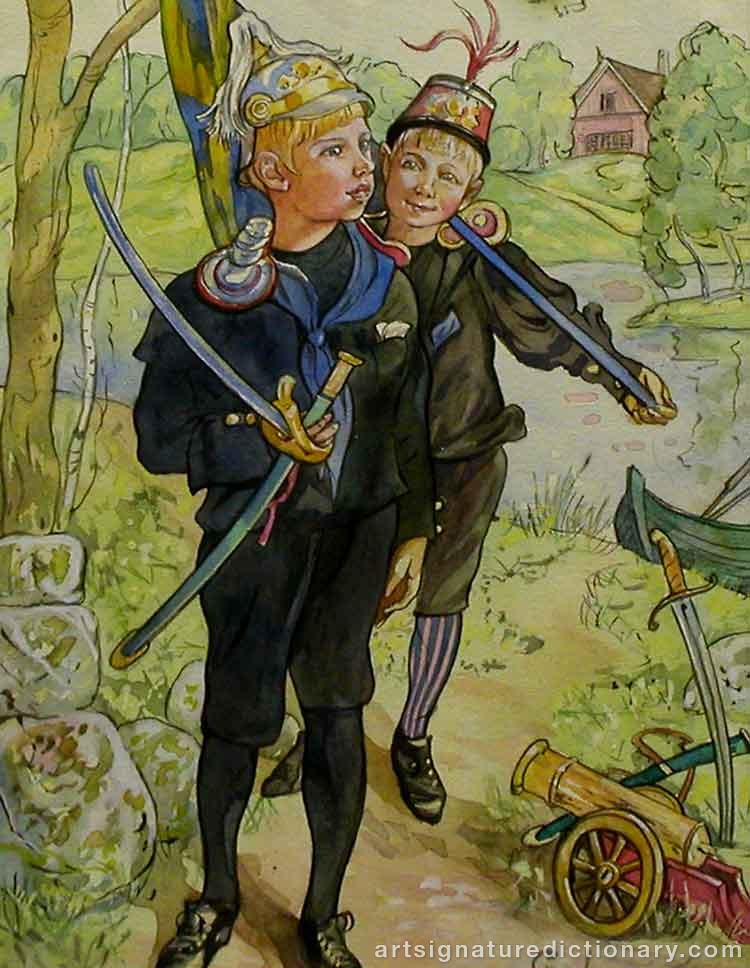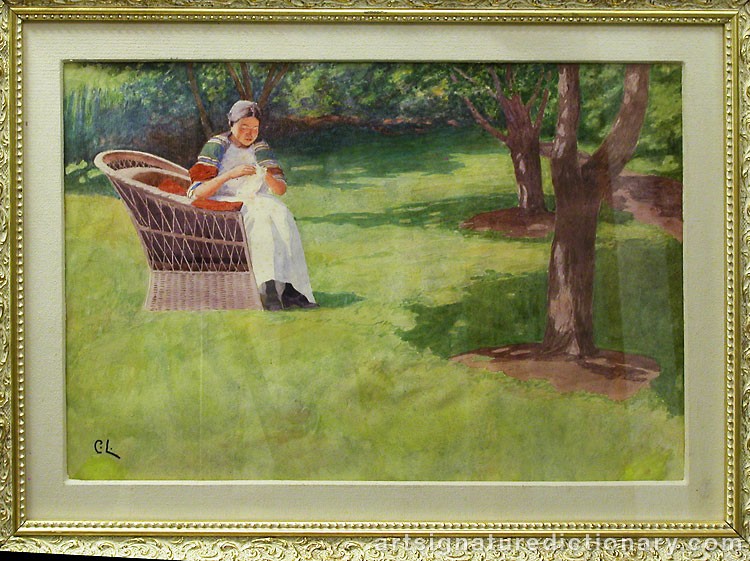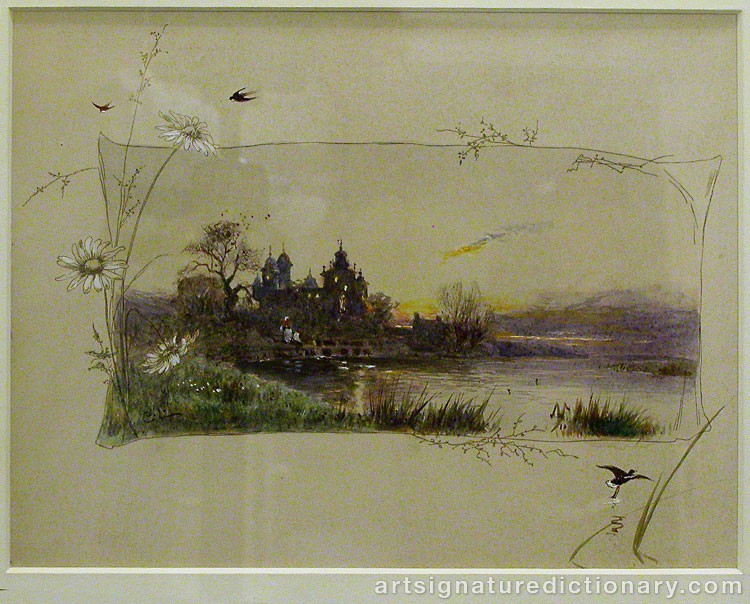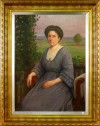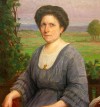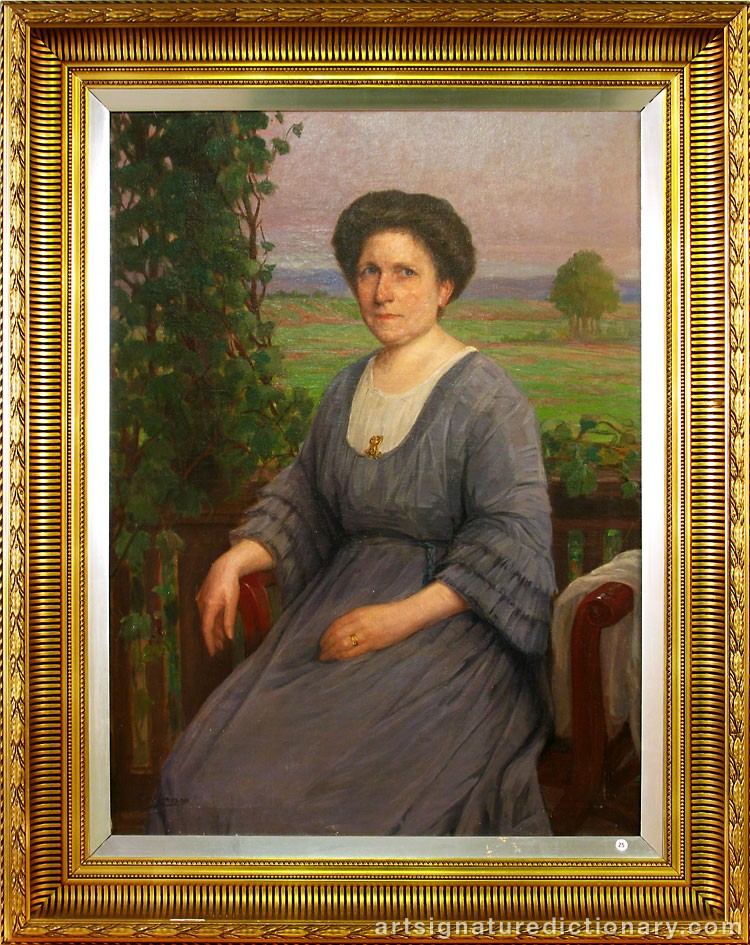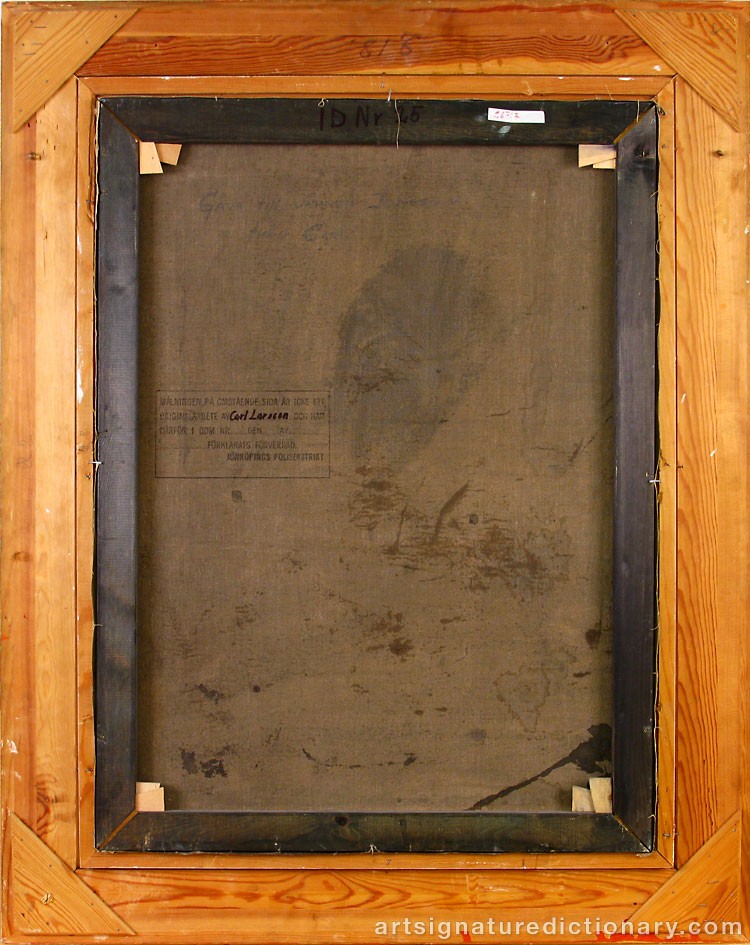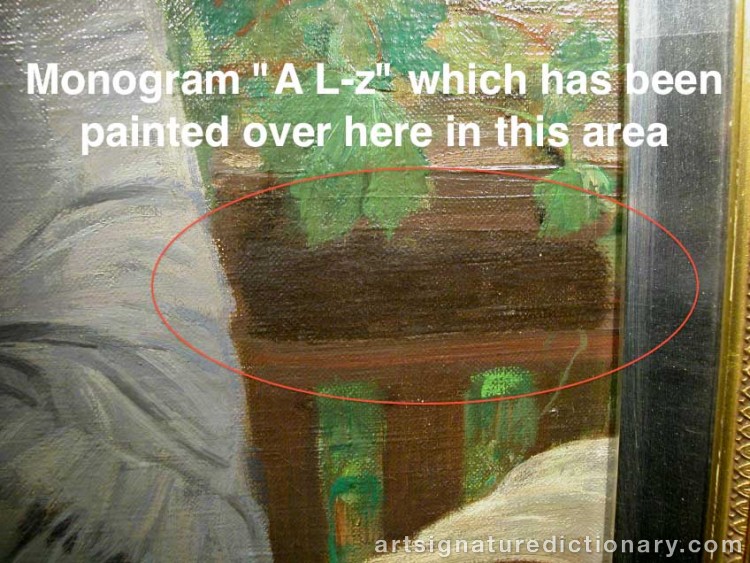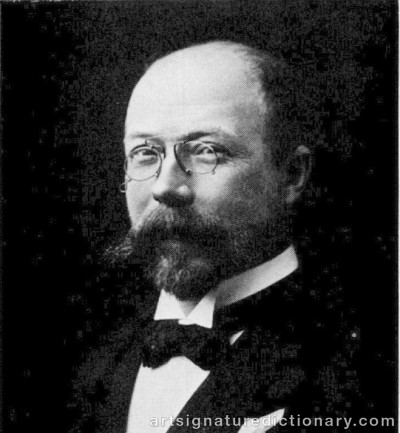
Carl LARSSON
1853–1919, Sweden
Also known as: CL, EL
Signatures & monograms
51 signatures and monograms by Carl Larsson on drawing, graphic, print, painting and watercolour. Compare authentic and documented counterfeit examples to study signature characteristics.

Signature proven counterfeit
Watercolour, title: "Brita" 75x48 cm incl. frame. The painting was for sale at a major auction house in Stockholm in 2007 but discovered that it was probably a forgery. A police report was made and the painting was confiscated. The painting's owner has stated that he inherited the painting from his father many years ago and that he had bought the painting for a long time ago, probably sometime in the 1940s. Investigation of the painting showed that it is a forgery, not painted by Carl Larsson nor signed by him.

Signature proven counterfeit
Watercolor, nude model with flowers, signed "CL", 77x64 cm. In September 2006, submitted the painting for sale to a major auction house in Stockholm. Estimate: 800,000 to 1,000,000 crowns. But the painting was suspected to be a forgery and they contacted police. On subsequent investigation revealed that the painting was counterfeit (a forgery Sk). Court: The painting is not done by Carl Larsson nor signed by him. It is a forgery.
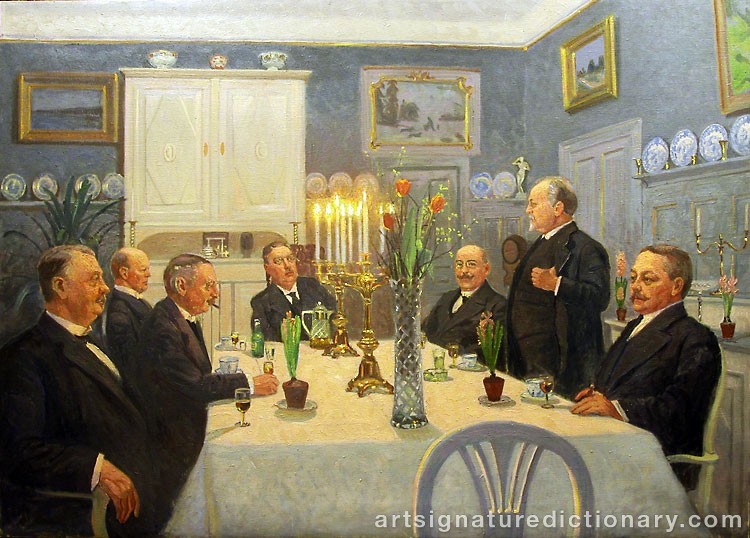
Signature proven counterfeit
Oil on canvas, speech, signed "CL". Ostensibly representing an authentic painting by the Swede artist Carl Larsson. Seized painting with fake monogram signature. After an expert assessment and judgment declared that the painting is not genuine. It is a forgery. The examination revealed that the painting was executed in oil paint on the wrong side of the canvas. The painting was signed C.L. 1896 in the left bottom corner. The UV light was found that the signature was very different from the other color, which indicates that the signature is later completed. In addition, there was an over-painted signature in the lower right corner of the painting. Court: The signature must be removed and that on the back of the canvas must be advised that the painting is not a work of Carl Larsson. Thereafter, the painting is returned back to the owner. Warning: There is a risk that the painting gets a new forged signature and may come back on the market.

Signature proven counterfeit
Watercolor 21.6x28,5 cm. The subject is a poor attempt to copy Carl Larsson's original "Breakfast under the big birch tree" from 1896 with the dimensions 32x43 cm, which is at the National Museum in Stockholm Sweden. The petitioner of this falsification has added a girl in red dress sitting on his knees at the big birch.

Signature proven counterfeit

Signature proven counterfeit
Watercolor 29x39 cm. The motive, except the kids, is a poor imitation of Carl Larsson's original "Karin with azalea" watercolor from 1906, 45x62 cm. that at the time of the seizure is owned by Thilska Gallery in Stockholm. One of the children, the baby, is an imitation of Carl Larsson's original "Little Suzanne" oil painting from 1885, which as at the time of the seizure is owned by the Gothenburg Museum of Art. Where the other two children are taken is unknown. The painting is a forgery.

Signature proven counterfeit

Signature proven counterfeit
Watercolour, signed "C.L.". The forger has used a model from a watercolor Carl Larsson painted in 1909 and included in the book "To the sunny side" Bonnier publishing house in 1910. The original was sold at Sotheby'si London 1990 (no. 21). But the The forger has, to make it more fun and maybe more salable, added a Carl Larsson's son Ulf. After an expert assessment and judgment declared that the painting is not genuine. It is a forgery.

Signature proven counterfeit
Watercolor, Forger has used an original by Carl Larsson in 1894 as part of Carl Larsson's book "A Home". The original is at the National Museum in Stockholm. Forger changed Carl Larsson's daughter to sit on the stool in front of the table. In addition, the forger added a couple of dogs from one another by Carl Larsson's paintings from 1909.

Signature proven counterfeit

Signature proven counterfeit


Signature proven counterfeit
Oil on canvas, 75x55 cm, signed Carl Larsson. On the back of the canvas is written: "To the friend Jonsson from Carl." On the right side of the painting is an area with new paint, which can be glimpsed the signature "A Lz". Dr. Lennart Linderberg, who very well knew the artist Ava Lagercrantz, affirmed by letter that he believes the painting is a self portrait of her. It is later signed with the name Carl Larsson. The District Court's assessment: The painting is probably a work of Ava the Lagercrantz, whose signature has been painted over. The painting is a forgery and not signed by Carl Larsson.

Signature considered genuine
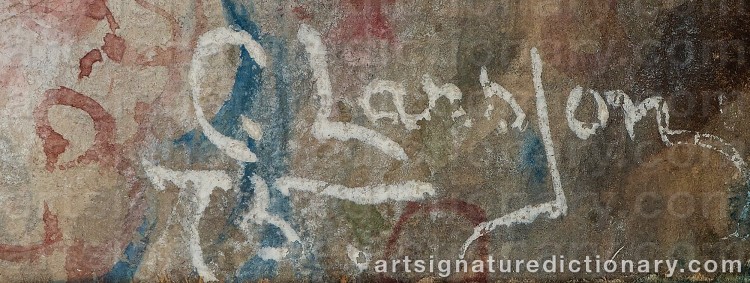
Signature considered genuine

Signature considered genuine

Signature considered genuine

Signature considered genuine

Signature considered genuine

Signature considered genuine
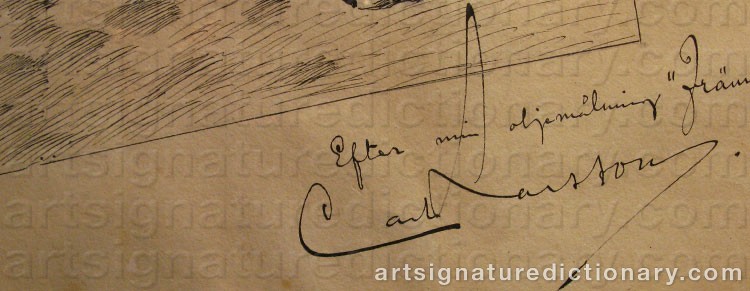
Signature considered genuine

Signature considered genuine
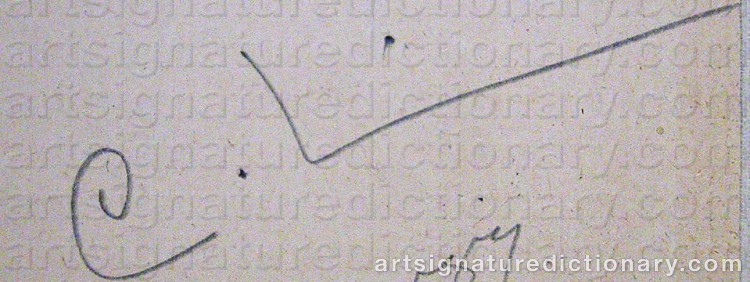
Signature considered genuine

Signature considered genuine

Signature considered genuine

Signature considered genuine

Signature considered genuine

Signature considered genuine

Signature considered genuine

Signature considered genuine

Signature considered genuine

Signature considered genuine

Signature considered genuine

Signature considered genuine

Signature considered genuine
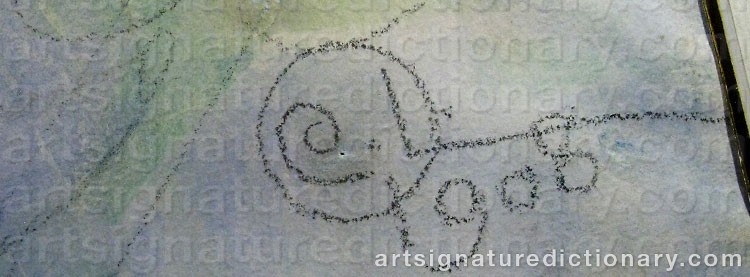
Signature considered genuine

Signature considered genuine

Signature considered genuine

Signature considered genuine

Signature considered genuine

Signature considered genuine

Signature considered genuine

Signature considered genuine
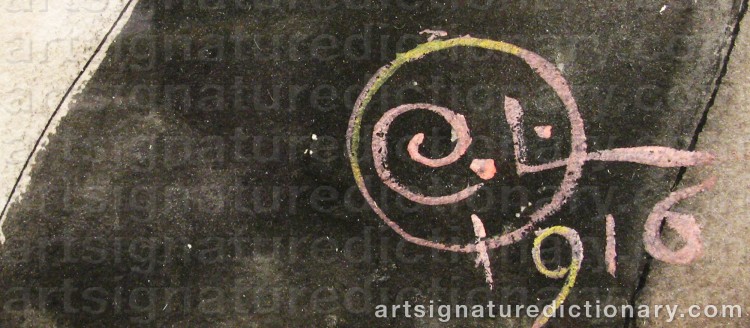
Signature considered genuine

Signature considered genuine

Signature considered genuine

Signature considered genuine

Signature considered genuine
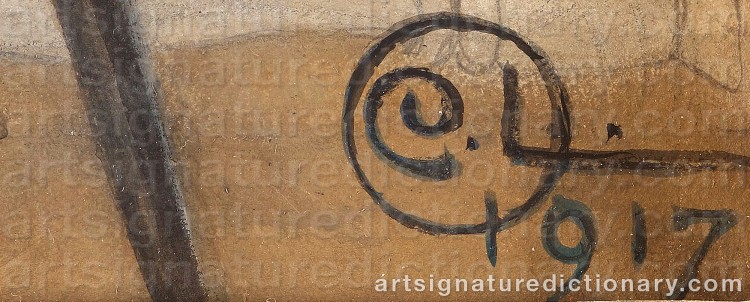
Signature considered genuine
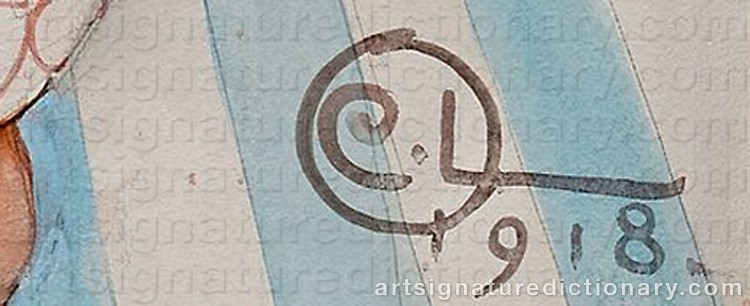
Signature considered genuine

Signature considered genuine
Explore other artists
Discover other notable artists who were contemporaries of Carl LARSSON. These artists worked during the same period, offering valuable insights into artistic movements, signature styles, and authentication practices. Exploring related artists makes it easier to recognize common characteristics and artistic conventions of their era.
